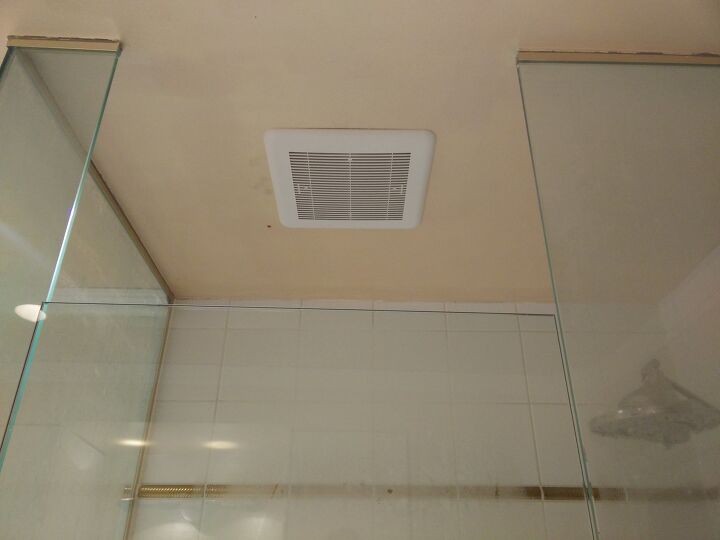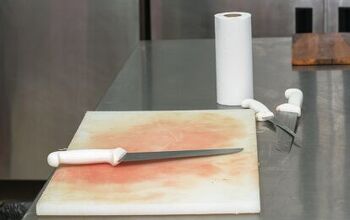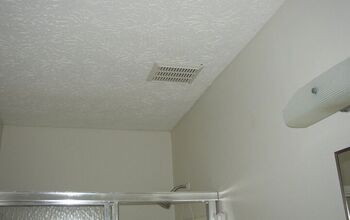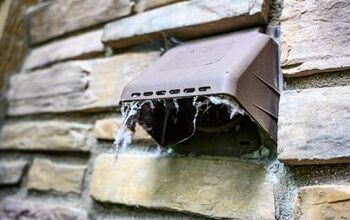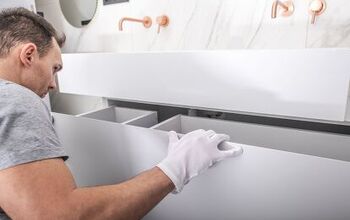Can You Vent A Bathroom Fan Through The Soffit? (Find Out Now!)

Proper ventilation is important not just for your HVAC system. It also matters for all the exhaust fans you have installed that take moist air from one place to the next. For instance, the air coming from your bathroom exhaust fan needs to come out somewhere.
The spots that can accommodate the exhaust from your bathroom fan are fairly limited. Is it possible to use your home’s soffit for that purpose though?
Venting your bathroom exhaust fan through your home’s soffit is indeed an option. However, the air coming from the exhaust must go through the soffit and not into it. Your household would be violating residential building codes if the bathroom exhaust was going into the soffit.
Pinpointing a suitable venting spot for your bathroom exhaust fan can be difficult. Can you end your search by choosing your soffit? Learn the answer to that question by reading on.
Do You Need Ducts or Vents Installation or Replacement?
Get free, zero-commitment quotes from pro contractors near you.

What Is a Soffit?
Before we get into ventilation discussions, let’s first talk about the part of the home we’re focusing on in this article. The soffit is an element featured in many homes, although some homeowners may not even know what it’s called.
To find your soffit, you need to look under your roof. If your roof hangs over the side of your home, its underside may feature a finish of some kind. That finish is called the soffit.
The soffit’s main job is to actually offer ventilation. It is supposed to help regulate the temperature inside your attic.
Also note that the soffit can offer some protection against the elements. That aforementioned part of your home can also be a decorative element if designed a certain way.
Can You Use the Soffit to Vent Your Bathroom Exhaust Fan?
We now know that one of the soffit’s main uses is to provide some kind of ventilation. Does that mean that it can be used to ventilate your bathroom exhaust fan? Well, that depends on how you intend to use the soffit for your ventilation.
Residential building codes outlined by the Environmental Protection Agency have set rules for exhaust systems. According to the International Residential Code, air cannot be exhausted into your soffit. That sounds bad for your ventilation plans doesn’t it?
Note though that the code specifically says we cannot vent exhaust into the soffit. It does not necessarily mean that we cannot utilize the soffit for ventilation in other ways.
Instead of dumping the exhaust into your soffit, you need to let the soffit guide the air out of your home. Basically, your goal is to use the soffit as a kind of channel that leads the exhaust outside.
Why Should Venting into the Soffit Be Avoided?
Venting the air from your bathroom exhaust fan into your home’s soffit is not a good idea. We’re violating residential building codes by doing that.
Still, is that the only reason why we must avoid that practice? No, there are actually other reasons why designing your ventilation that way can be bad for your home.
The number one reason why you should not vent bathroom exhaust into your soffit is because it can be damaging. Remember that the air coming from your bathroom fan is often moist and warm. That type of air can be damaging when it remains in a confined space.
If your soffit is made from certain materials, it could suffer lasting damage brought about by the bathroom exhaust. You may have to replace your soffit after it’s exposed to your bathroom exhaust long enough. Even parts of your home covered by the soffit like your attic could sustain damage.
Avoid directing bathroom exhaust into your soffit not just because the residential code says so. You should also avoid it because your home will suffer from that decision.
What Are the Benefits of Venting Your Bathroom Fan through Your Soffit?
Running your bathroom ventilation through your soffit is a sensible move. It may even be the best move you can make for your household. Homeowners can enjoy different benefits from using their soffit to ventilate their bathroom exhaust fans. We’ve outlined some of those benefits below.
Venting through the Soffit Is Safer and Easier
We noted earlier that the suitable bathroom ventilation spots found throughout your home are fairly limited. You cannot just pick whichever spot you want. Among those limited spots, the soffit is arguably the easiest one to use.
Compared to other suitable bathroom ventilation spots, the soffit is fairly easy to access. The soffit being in an exposed spot helps with that.
Working on your soffit may also be preferable to installing ventilation on your roof from a safety standpoint. That is especially true if you’re taking on this as a DIY project.
Climbing up to your roof to install something can be risky if you’re doing it solo. The risk level is reduced if you’re sticking to the soffit.
Errors Are Less Damaging When Venting through the Soffit
A lot of contractors will tell you that the bathroom fan should be vented through the roof. That would indeed be a good solution if you can make it happen. However, there are also risks that come with that kind of move.
One thing especially worth noting is the possibility that your roof might leak after installing the vent. Leaking is a possibility if the vent was installed improperly. You could be creating more problems as opposed to solving them by installing the ventilation on your roof.
Errors are still possible if you installed the vent in the soffit incorrectly. They are just less damaging to your home.
Maintain Your Home Design
Another advantage of using your soffit for bathroom ventilation is the fact that it has little impact on your home design. When you add a vent to your roof, you may be disrupting your home décor. The ventilation is certainly important, but it may not be worth disrupting your décor over.
You’re also changing up the look of your soffit if you’re placing the vent there. Crucially though, the new vent installed on your soffit is easier to conceal. Visitors may not spot it unless you tell them about it.
After investing so much money into your roof, changing it to accommodate a vent is not ideal. Thankfully, you can avoid doing that by using your soffit.
Venting through Your Soffit Can Save You Money
Lastly, venting your bathroom fan through your soffit is a good move to consider because it can save you money. The space from the soffit to your bathroom is likely shorter than the space from your roof to your bathroom. That means you don’t need as much duct material if you’re ventilating through your soffit.
You can save money by using shorter ducts. Feel free to use that money to improve your home in other ways.
Do You Need Ducts or Vents Installation or Replacement?
Get free, zero-commitment quotes from pro contractors near you.

Related Questions
What Are the Materials Commonly Used to Create Soffits?
Wood and vinyl are probably the materials that are most commonly used to create soffits. After them, homeowners may also opt to use aluminum, steel, or fiber cement. Choose the material that works best for your home functionally and aesthetically.
Do You Need a Cover for Your Soffit Vent?
Yes, installing a cover over your soffit vent is recommended. Installing a vent cover helps keeps excess moisture out of your home. It will help protect your home better from the elements.The vent cover can also deter any animals from using your vent as shelter. You don’t want animals staying there because they can interfere with the release of the bathroom exhaust.
Related Guides

Gary Evans is passionate about home improvement. He loves finding out how to make improvements in the easiest, most practical, and most affordable ways. Upgrading his home kitchen is one of his ongoing hobbies. Gary is also a long-time content creator and enjoys spending his free time tending to his hydroponic vegetable garden.
More by Gary Evans



